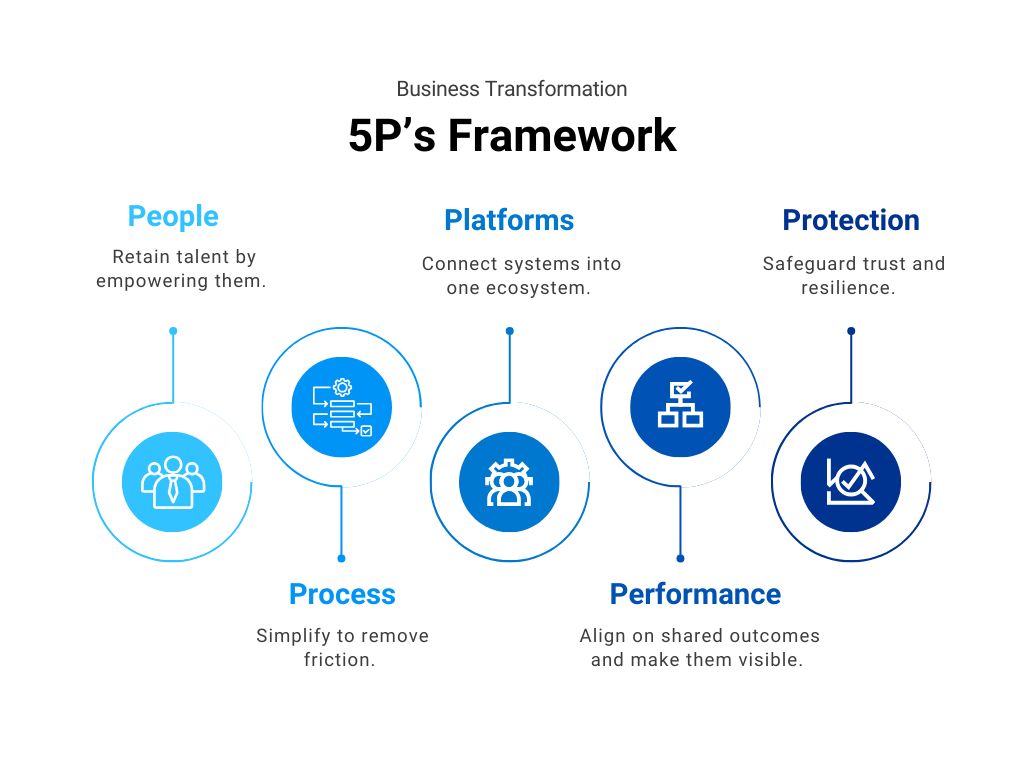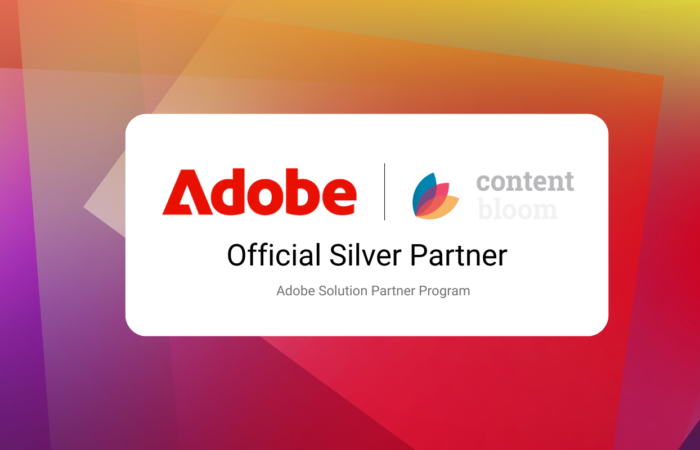Translation costs are through the roof. You’re searching for the real truth. The team is walking out the door, No knowledge of that anymore.
Translation budgets spiral, yet content is still rewritten not reused. Teams know that there is waste, but they’re powerless to stop it with looming deadlines. The human toll is exhaustion, talented people leave, and unfortunately, their knowledge oftentimes leaves with them.
Meanwhile, your competitors are standardizing, reusing, and localizing at scale. They spend less, move faster, and retain the expertise you’re losing. This gap between leaders and laggards is widening, as shown by McKinsey’s research on digital and AI leaders.
The Fix?
- People → Capture knowledge so it survives turnover.
- Process → Design for reusability, not reinvention.
- Platforms → Create a connected content supply chain.
This is how you reduce cost, preserve energy, and keep pace whilst modernizing your digital estate and providing greater visibility to managers and leadership.
Silos they won’t integrate. How do we communicate?
Disconnected platforms create disconnected people. Teams feel isolated, leaders can’t see clearly, and collaboration slows, not from lack of effort, but because systems simply don’t connect.
As Forbes highlights, these are often the “quiet cracks” of legacy systems” that can poison your business from the inside.
Customers experience this too. Instead of clear, immediate answers, they get delays, confusion, or inconsistent information. The bar has been raised everywhere from one-click purchases, instant updates, and seamless service. If your business still struggles to connect the dots internally, it shows up externally as friction that customers no longer accept.
Competitors aren’t waiting. They’re investing in unified platforms, where data flows and insights travel instantly. While you’re stuck reconciling spreadsheets, they’re delivering seamless, personalized experiences.
The Fix?
- People → Bridge the silos.
- Process → Rebuild trust across functions.
- Platforms → Align metrics across boundaries.
When integration lands, confidence and competitiveness.
Matured to the point of pain?
Pain isn't failure. It's proof your system delivered all it can
Customers wanting to self-serve, I think I’ve hit another nerve.
Customers aren’t harder to please, the bar has simply been raised. And it’s not your competitors raising it. It’s the everyday brands people rely on: booking a flight in seconds, streaming instantly, or reordering groceries with a tap. That seamless ease becomes their baseline.
Copying competitors won’t solve it either. What looks slick on the surface can be chaos behind the scenes, a shiny front end hiding broken processes. Chasing that is just a distraction, wasting time and budgets.
If your foundations aren’t right, customers notice. They may not complain, but they probably won’t renew either, and they won’t come back. The truth shows up in declining repeat purchases and silent customer churn. Adding more people to patch the cracks doesn’t scale and claw-back campaigns won’t work either. It drives up costs, burns out teams, and still leaves customers waiting.
The fix?
- People → Understand what customers want to achieve for themselves.
- Process → Automate where it adds speed and clarity.
- Protection → Remove pressures — freeing customers from friction and employees from repetitive work.
Done right, self-service creates loyalty and frees your teams, customers get speed, clarity, and control the ability to solve problems on their own terms. Employees are freed from repetitive, low-value tasks and can focus on higher-impact work that drives innovation. And the business gains resilience: lower costs, higher retention, and a clearer path to scale.
Things were fast but now they’re slow. Why is this? We just don’t know.
Maturity should bring strength. Too often, it brings bureaucracy. More approvals, more tools, more friction, and the pace that once set you apart disappears.
Your teams feel it, your customers sense it, and your competitors exploit it. They cut complexity, apply automation to remove repetitive steps, and shorten time-to-value, while you struggle to understand why delivery now feels like battling the tide.
At its heart, the problem isn’t effort, it’s process flow. Progress stalls because decisions get trapped in layers of approval, handoffs multiply, and tools overlap without ever simplifying the path. The deeper issue, however, is ownership. When autonomy fades, the people closest to the customer can’t act without waiting for sign-off.
The fix?
- Process → Strip away what doesn’t add value, and design for flow instead of control.
- Performance → Focus on a few KPIs that drive outcomes, and empower teams to act within clear guardrails, ensuring their impact is visible, recognized, and tied directly to performance.
- Process + Platforms → Apply automation to clear repetitive steps, so people spend time where they add the most value.
When clarity replaces clutter and autonomy is restored, speed returns. In a world where decision velocity is a competitive advantage, cutting friction doesn’t just get you back on pace, it puts you ahead.
If every day is same, same, same, then you have matured to the point of pain.
This is the recognition moment. Innovation slows, the work feels repetitive, and people lose belief that change is possible.
But while you pause, others accelerate. Competitors turn your stillness into their opportunity.
Pain is not failure, it’s the number one ROI metric of success! It’s the signal that your current system has delivered all it can. In life, change is inevitable the only question is whether you choose to lead it or be forced into it.
But fear not there is a solution that doesn’t require a revolution. Let’s review just where you’re at, and why you’re there, and not just that.
Let’s discuss people and what they need, and plant another maturity seed. Review your processes one by one, and the unproductive ones will be gone.
Platforms need to integrate, move the dial and motivate. If what you have doesn’t do the trick, we’ll rip it out for the best fit.
Performance will improve each day, but you must measure without delay. Brand is core and needs protection, and doesn’t need a general election.
If you recognize any of this, then let us help with your transformation bliss…
Transformation doesn’t come from slogans or silver bullets. It comes from getting the fundamentals right, setting the foundations, having a vision and a road map, the 5 P’s allows us to break down this complexity:

- People → Retain talent by empowering them.
- Process → Simplify to remove friction.
- Platforms → Connect systems into one ecosystem.
- Performance → Align on shared outcomes and make them visible.
- Protection → Safeguard trust and resilience.
And by the way, don’t mistake AI (not me) for a shortcut. Plugging copilots into broken processes won’t transform you, it will only accelerate dysfunction.
The real breakthrough comes when you fix the foundations and then let AI amplify strength rather than scale weakness.
That’s when pain becomes progress. Not chasing the pace of others — but setting it.
FAQs
1. What does “matured to the point of pain” mean in business?
It describes the point where a successful business’s growth starts to hurt. The very systems that once drove success become slow and complex, leading to rising costs, siloed teams, and talent churn. This “pain” is not a failure, but a critical signal that it’s time to modernize your operations strategically.
2. How can my business turn digital strain into strategic progress?
You can use the 5P framework to simplify your operations and regain momentum:
- People: Empower your teams and capture their knowledge to prevent talent drain.
- Process: Simplify workflows to reduce friction and bureaucracy.
- Platforms: Connect your systems into a single, unified ecosystem.
- Performance: Align on shared outcomes and track key metrics.
- Protection: Safeguard customer trust and brand resilience. This approach transforms pain points into competitive advantages.
3. Why can’t AI alone solve our digital transformation problems?
AI adoption is an accelerator, not a solution. If you apply AI to broken or inefficient processes, it will only speed up the dysfunction. True digital transformation first requires fixing the fundamentals of your business—your People, Processes, and Platforms. Once your foundation is strong, AI can amplify your strengths and drive real innovation.





